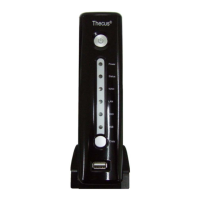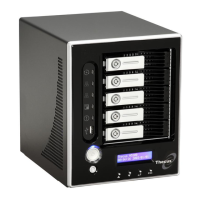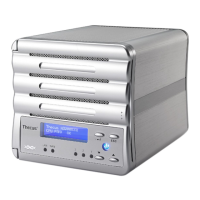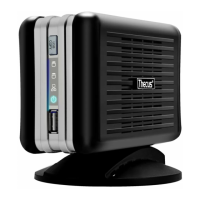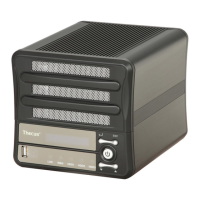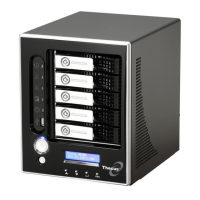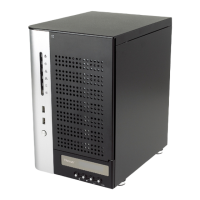Do you have a question about the Thecus N8900 series and is the answer not in the manual?
| RAID Levels | RAID 0, 1, 5, 6, 10, JBOD |
|---|---|
| Network Interface | 2 x Gigabit Ethernet |
| eSATA Ports | 2 x eSATA |
| Power Supply | 300W |
| Operating System | ThecusOS |
| Model | N8900 series |
| Drive Bays | 8 x 3.5" SATA HDD bays |
Provides an overview of the Thecus IP storage server and its capabilities.
Details key features like File Server, FTP Server, iTunes Server, Printer Server, and Multiple RAID.
Explains the support for iSCSI initiators for direct-attached storage over LAN/Internet.
Describes the schedule power on/off feature and Wake-On-LAN capability.
Describes the front panel components and controls for various Thecus NAS models.
Details the ports and connectors available on the rear panel of different Thecus NAS models.
Guides users through the initial setup and installation process.
Outlines essential precautions before starting the hardware installation.
Provides instructions on connecting the NAS to the network using Ethernet cables.
Explains the initial software setup using the Setup Wizard or LCD display.
Details the process of using the Setup Wizard for configuring the NAS.
Describes the operation of front panel LCD/OLED displays and controls.
Outlines the standard five-step procedure for initial NAS setup.
Guides users on accessing and navigating the web-based administration interface.
Explains the user interface elements like My Favorite and Menu Bar.
Covers viewing system info, status, service status, and logs.
Details various system settings including time, notifications, firmware, and power.
Explains network settings like IP, DHCP, VLAN, and Link Aggregation.
Covers disk information, RAID, iSCSI, NAS stacking, ISO mount, shares, ACLs, and snapshots.
Details managing users, groups, ADS/NT, LDAP, and quotas.
Explains Samba, NFS, FTP, TFTP, WebService, UPnP, and VPN services.
Covers iTunes Server, Module Installation, and Auto Module Installation.
Describes Dual DOM, Rsync, Data Guard, iSCSI backup, ACL backup, Data Burn, USB Copy, and utilities.
Explains connecting and using USB and eSATA storage devices.
Guides on setting up remote access via the internet using DynDNS and virtual servers.
Covers replacing drives and RAID auto-rebuild functionality.
Troubleshooting steps for forgotten network IP addresses.
Addresses issues with mapping network drives in Windows XP.
Instructions for restoring the NAS to its factory default settings.
Resolves problems related to incorrect time and date settings.
Explains the Dual DOM feature for system protection and recovery.
Lists changes and new features included in firmware version v2.03.01.
Provides general system information, including JBOD device support.
Details how to monitor system and service status.
Displays detailed hardware information for the NAS model.
Shows installed disk information and S.M.A.R.T. status.
Explains how to perform a bad block scan on the disks.
Details various local backup methods: Import, Copy, Realtime, Schedule.
Guides on importing data from external devices to the NAS.
Explains options for copying data between folders or devices.
Covers setting up realtime and scheduled backup tasks.
Describes backing up and importing iSCSI volumes.
References a guide for managing volume expansion.
Explains RAID concepts, performance improvements, and data security.
Describes standard RAID levels (0, 1, 5, 6, 10, 50, 60) and JBOD.
Details stripe size and disk usage percentages for different RAID levels.
Illustrates how to open the top cover of the N8900 series NAS.
Illustrates how to open the top cover of the N12000 series NAS.
Illustrates how to open the top cover of the N16000 series NAS.
Introduces Active Directory (ADS) and its benefits for network management.
Defines Active Directory as a scalable directory service for corporate needs.
Explains how ADS simplifies integration and centralizes user management.
Provides information on the GNU General Public License terms.
Details the basic license terms for CGIC.
Outlines the terms and conditions for copying, distribution, and modification.


